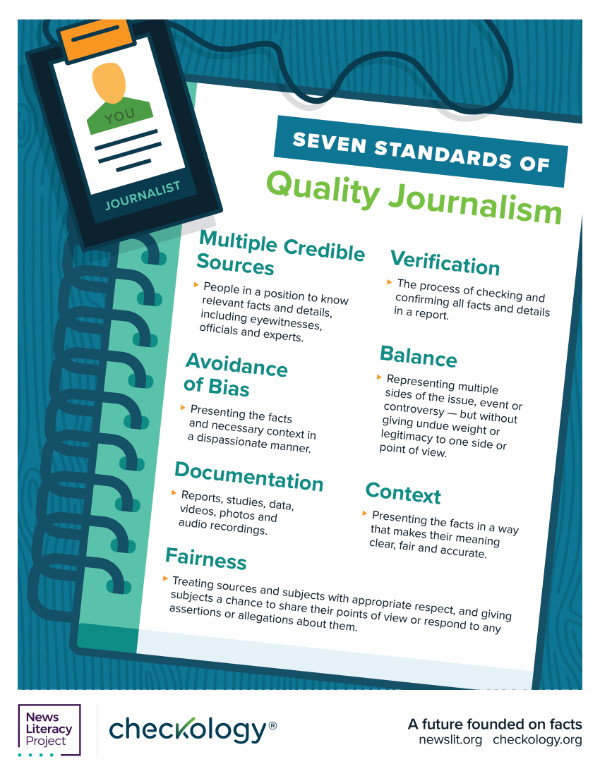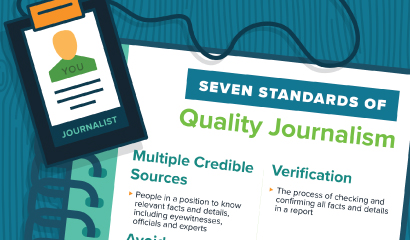
News Goggles: Emilie Munson, Times Union
This week, we talk to data reporter Emilie Munson of the Times Union, a local news organization based in

The standards and practices of quality journalism are complex, numerous and dynamic, and are implemented differently by different journalists and different news organizations under different circumstances on different pieces of journalism. See a trend here? Practicing journalism is complicated and nuanced. Still, the general purpose behind the standards is the same: to produce the most accurate, fair and useful information possible.
Some journalism standards are obligatory (such as the prohibition against making things up) and quantifiable (such as newsroom policies about the use of anonymous sources), while others are aspirational (such as the attempt to eliminate bias and to be as fair and accurate as possible) and require judgment and discussion to apply (such as assessing newsworthiness, evaluating sources and determining fairness).
 In almost all cases at major news organizations, these standards are subject to constant reconsideration and revision — whether to prevent the recurrence of an error or to adapt to new tools and methods of gathering and reporting information (for example, using social media to locate sources, or livestreaming breaking news events).
In almost all cases at major news organizations, these standards are subject to constant reconsideration and revision — whether to prevent the recurrence of an error or to adapt to new tools and methods of gathering and reporting information (for example, using social media to locate sources, or livestreaming breaking news events).
By introducing students to the major standards of quality journalism, and helping them understand their nature and rationale, you’re providing them with conceptual and analytical tools that they can use to evaluate the credibility of the information they encounter daily and, in some cases, to critically respond to it. This knowledge can also activate a wide variety of high-level news literacy discussions in your classroom and beyond.
The seven primary standards of quality journalism and their descriptions are included in the poster linked below. This poster is adapted from a highly interactive, immersive learning experience in our Checkology® virtual classroom in which students are placed in the role of a rookie reporter on the scene of a breaking news event and learn the standards of quality journalism by “covering” the story. They are guided by their editor and a veteran reporter back in the newsroom throughout the process, and can use their virtual notebooks to see their progress in following the standards. At the end of the lesson, they build the story, selecting the most appropriate headline, lead, image and more. Use this poster with the Checkology lesson “Practicing the Standards of Quality Journalism” or on its own.
This week, we talk to data reporter Emilie Munson of the Times Union, a local news organization based in


Student voices are catalysts for positive change in schools and communities. You can empower them to be well-informed and


Misinformation is always problematic, but when it appears alongside family updates on social media, it can be especially frustrating.


This week, we talk to Karena Phan, a reporter for the news verification team at The Associated Press. Phan


This week, we talk to Los Angeles Times reporter Libor Jany about his role covering the Los Angeles Police



